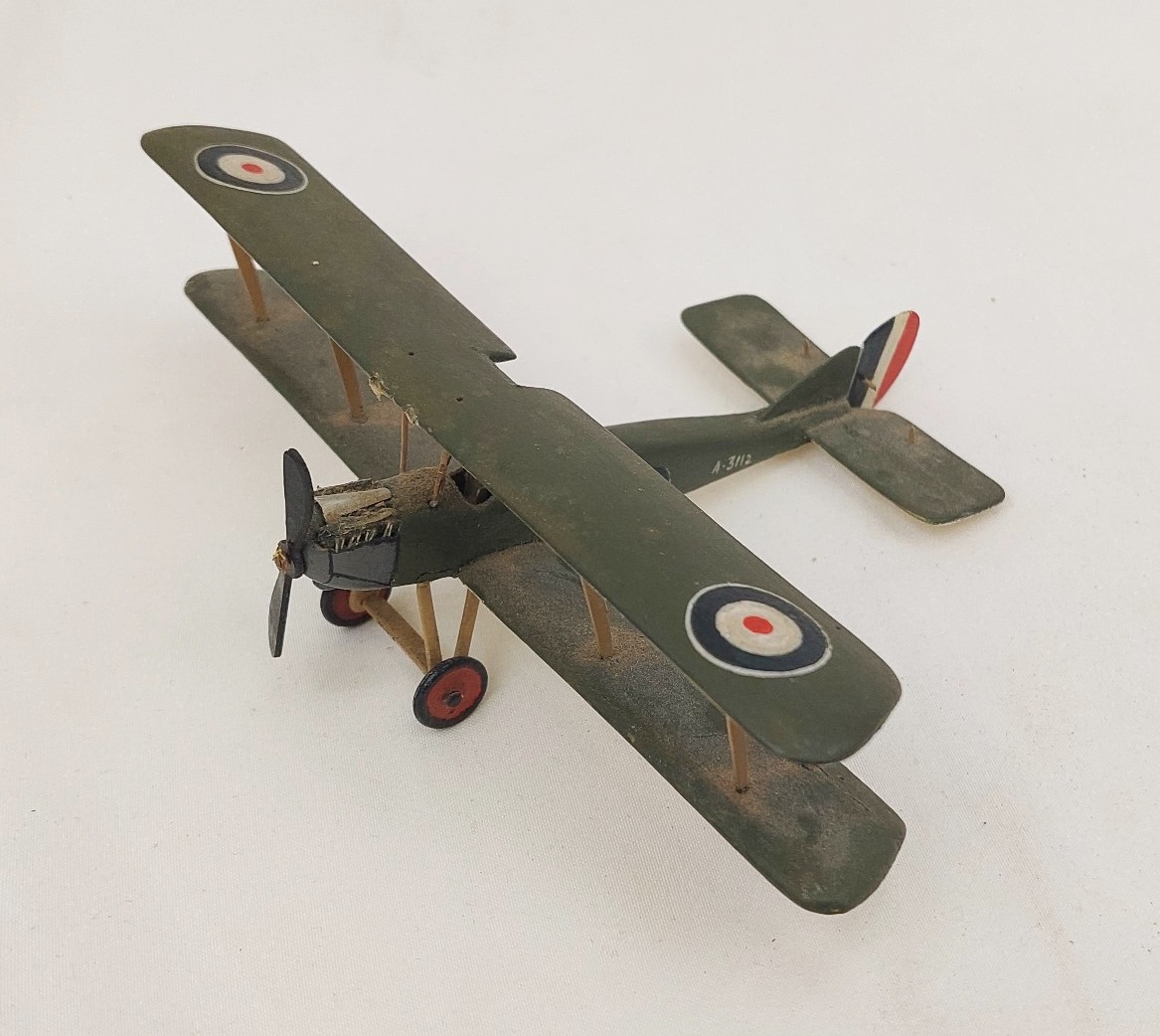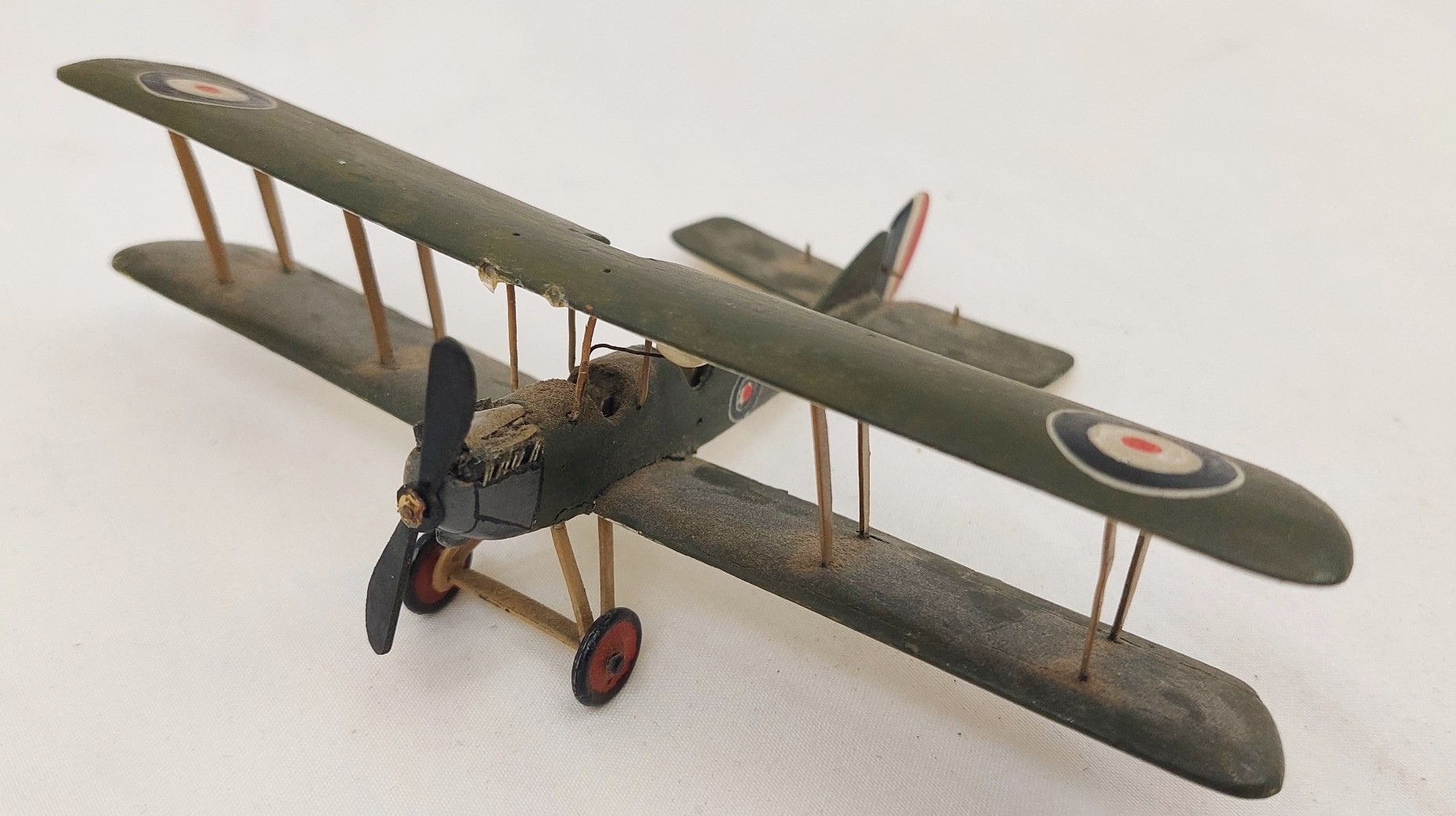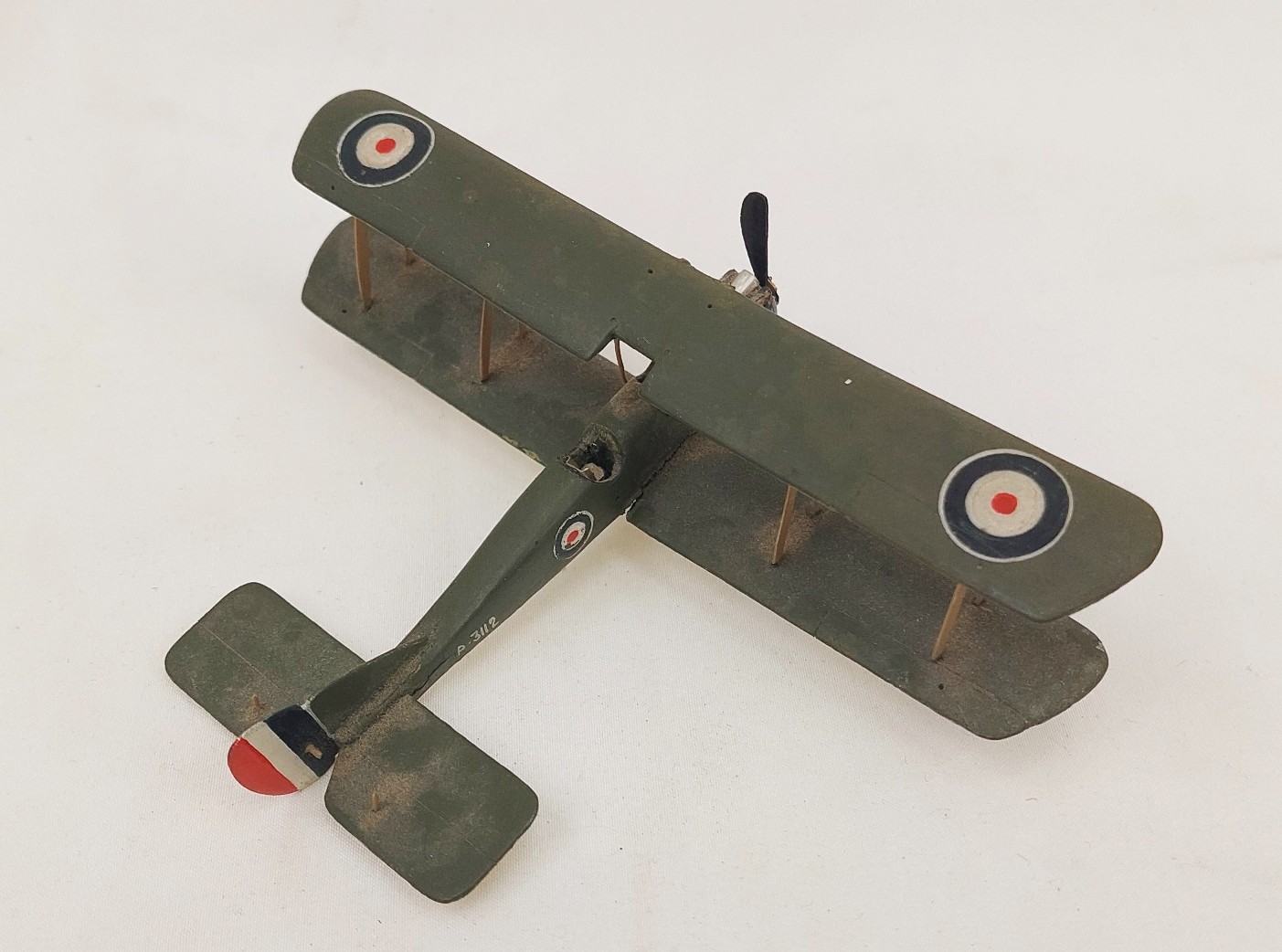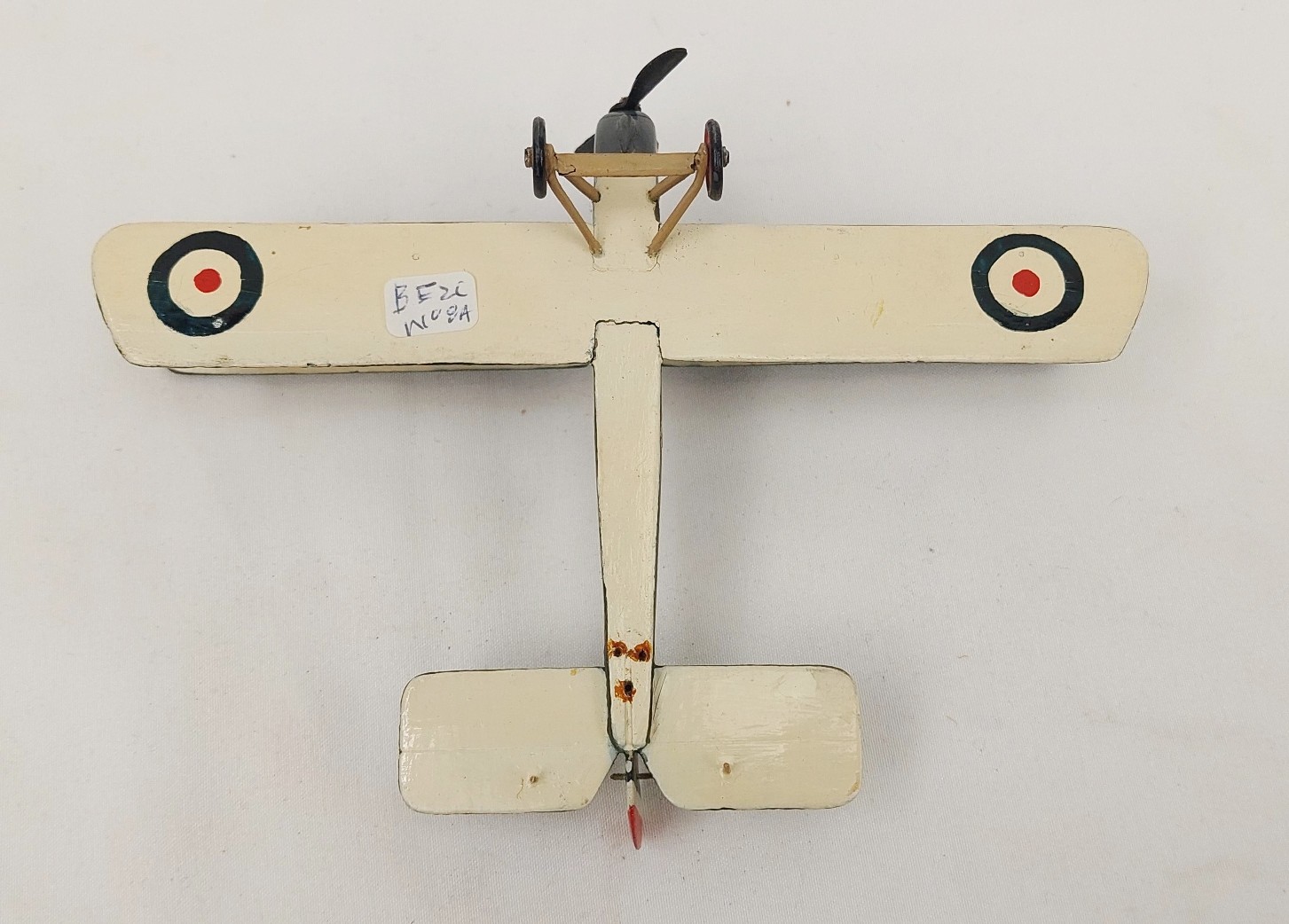~ 1930s Skybirds WW1 British BE2c Airplane Model ~
The Royal Aircraft Factory B.E.2c was not a fighter aircraft but rather a British two-seater reconnaissance and artillery observation aircraft used during World War I. It played a significant role in the early years of the war but was not designed for combat or aerial combat missions. Here are some key details about the B.E.2c:
Design and Development:
The B.E.2c, designed by Geoffrey de Havilland and John Kenworthy, was part of a series of aircraft developed by the Royal Aircraft Factory (hence the “R” in B.E.) during the pre-World War I period. It was designed as a reconnaissance and artillery observation aircraft, characterized by its stable and forgiving flight characteristics.
Design Features:
The B.E.2c had a conventional biplane design with a two-bay, unequal-span wing configuration. It was constructed primarily of wood and fabric covering. The aircraft featured a pilot in the rear cockpit and an observer/gunner in the front cockpit. The observer was typically equipped with a Lewis machine gun for defense.
Operational Service:
The B.E.2c entered service with the Royal Flying Corps (RFC) in 1912 and saw extensive use during the early years of World War I. Its primary role was to conduct reconnaissance and artillery spotting missions. It was not originally armed for offensive combat. Instead, it relied on its observer’s machine gun to fend off enemy aircraft.
Vulnerabilities:
The B.E.2c’s design made it susceptible to attack by more modern German fighter aircraft, such as the Fokker Eindecker, which were introduced in 1915. Its lack of effective defensive armament, slow speed, and limited maneuverability made it easy prey for enemy fighters, earning it a reputation as “Fokker Fodder.”
Phasing Out:
As the war progressed, the B.E.2c was phased out from front-line service in favor of more advanced aircraft. It was recognized that the design’s vulnerability to enemy fighters required replacement. However, the B.E.2 series continued to serve in various roles, including training and home defense.
The B.E.2c is notable in the history of aviation as an example of an early reconnaissance and observation aircraft. While it was not a fighter aircraft, its experience in combat helped shape the development of more capable and combat-ready aircraft that followed. The vulnerability of the B.E.2c highlighted the need for better defensive armament and maneuverability in future military aircraft.
~ Condition ~
Please refer to the images for the condition. The piece is in good order.
~ Dimensions ~
The aeroplane has a wingspan of 15 cm (6 inches).
JA_2112135134





